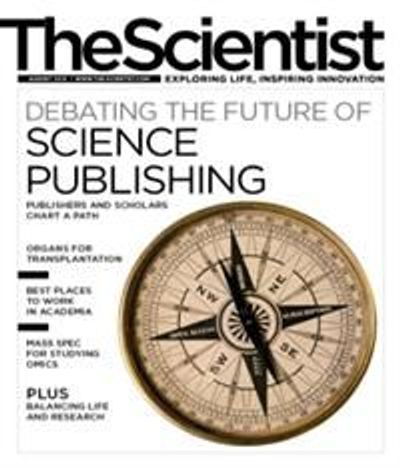What’s black and white and ‘read’ all over?” “A blushing zebra!” we’d always shout as kids, even when we knew the right answer: “a newspaper.”
But in the years since I first heard this punning riddle, the rise of the Internet has put a new face on the dissemination of information, challenging both researchers and publishers to find the best way to communicate scientific findings swiftly, cheaply, and effectively. No longer is there a black-and-white way of publishing scientific papers, especially those intended to be read all over.
Novel publishing platforms are being developed and launched at dizzying rates. As we go to press, and within less than a week of each other, both BioMed Central and F1000 announced the launch of new open-access (OA) journals. (The two companies are the brainchildren of Vitek Tracz, former owner of The Scientist.) One of the pioneers of open-access publishing, BioMed...
The following day, F1000 Research initiated a soft launch, publishing the first of three articles released over 4 days, with a formal launch planned for later this year. But the editorial process of this OA journal is very different. F1000 Research offers immediate publication “after a rapid initial check by the in-house editorial team,” with peer review to be conducted post-publication—“fast, formal, and completely open.”
No longer is there a black-and-white way of publishing scientific papers, especially those intended to be
read all over.
Also planning to accept submissions this September is the OA journal PeerJ, whose cofounder Peter Binfield is the former publisher of PLoS ONE. While PeerJ will publish peer-reviewed biological and medical articles, it will not charge authors on a per-article basis, but rather offers three-tiered, lifetime membership for a fee based on the number of articles an author publishes—fees substantially lower than those charged by other OA journals. The other factor that differentiates PeerJ from all the other new kids on the block is that articles submitted for publication will not be rated for impact.
Billed as being published by scientists for scientists and launching this winter, eLife will publish only high-impact articles, which it began accepting on June 21. Initially the journal will not be charging authors. University of California, Berkeley, biologist and former editor-in-chief of Proceedings of the National Academy of Sciences Randy Schekman will be the journal’s top editor.
Schekman is one of 12 researchers, information scientists, and publishers who debate how increasingly complex and data-heavy scientific research should be presented in “Whither Science Publishing?.” Yes or no to peer review? Who should pay to publish? When to go open access? Two complementary Critic at Large columns examine predatory publishers and the need to set transparency standards.
This month’s magazine also contains a progress report, “Replacement Parts,” on two very different methods for addressing the huge shortage of organs suitable for transplanting into humans: xenotransplantation from genetically engineered pigs, and the use of artificial or decellularized scaffolds seeded with a patient’s own cells and grown in the laboratory. You will also find the perennially popular Best Places to Work in Academia—our 10th annual survey.
It’s not black and white, but this issue is one to be read all over.
Mary Beth Aberlin
Editor-in-Chief
eic@the-scientist.com
Interested in reading more?




